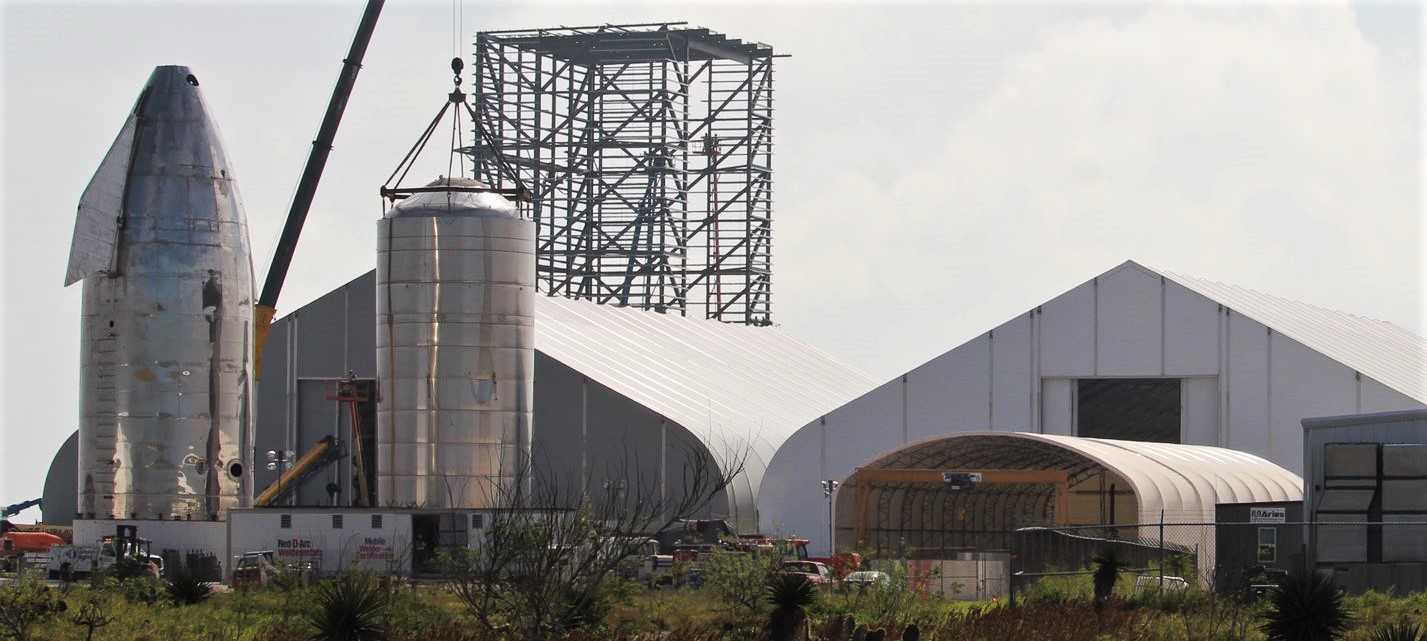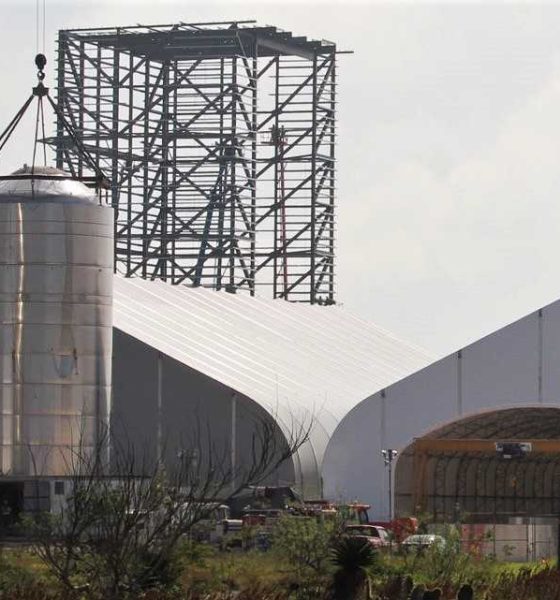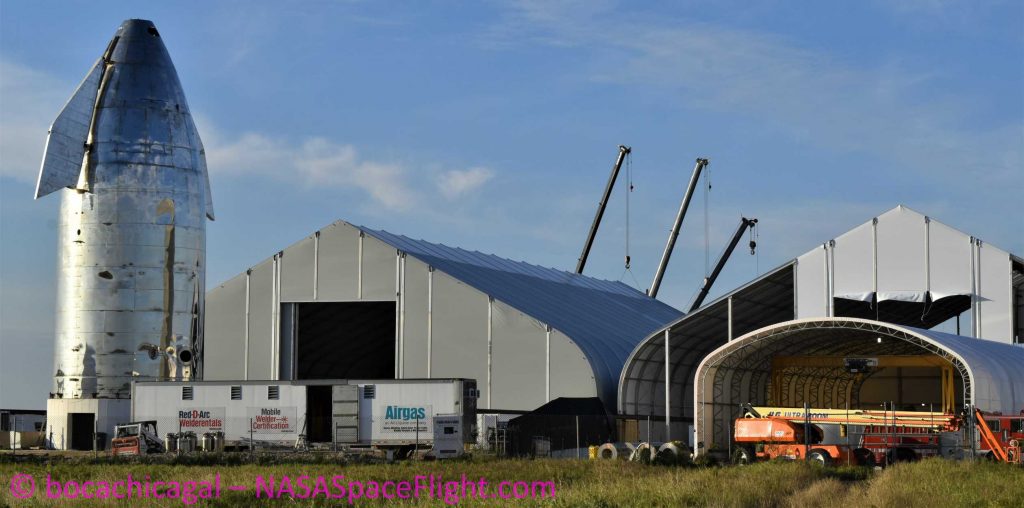

News
SpaceX's California Starship factory plans detailed ahead of permitting decision
SpaceX’s California Starship factory plans have been detailed in new documents published by the Los Angeles Board of Harbor Commissioners, one of the last big steps before a crucial permitting decision is made later this week.
First reported on February 1st, SpaceX has resurrected plans to build a Starship factory in Los Angeles, just 20 or so miles away from the company’s Hawthorne, California headquarters. SpaceX abandoned its lease of Port of Los Angeles Berth 240 in the spring of 2019, a decision made a handful of months after the company dramatically scrapped plans to build its next-generation rocket out of carbon-fiber composites. Now known as Starship and Super Heavy and radically redesigned to use steel for 99% of its structural elements, SpaceX has been building prototypes of the Starship upper stage for more than 14 months.
That work has been performed almost exclusively at Boca Chica, Texas facilities that have been in an almost continuous period of gradual expansion and upgrades since late-2018. Situated a few miles from the Mexican border on the southernmost tip of Texas’ Gulf Coast, Boca Chica is an exceptional location for orbital launches from the continental United States but is less than optimal when it comes to build (and more importantly) staffing a high-quality rocket factory. Since Starship prototype fabrication and integration was shifted almost entirely to Texas, SpaceX has had to send expert Hawthorne-based employees to Boca Chica for weeks at a time, often hitching a ride on CEO Elon Musk’s private jet. With a dedicated Port of LA Starship factory, life could be made much easier, cheaper, and – ultimately – better for everyone involved.

While its growth has been undeniably gradual, SpaceX is in the late stages of building an impressive manufacturing base around its Boca Chica launch facilities. As of Tuesday, February 17th, company contractors have effectively completed the shells of two massive ‘sprung structures’ (tents) that are already being used to house certain Starship fabrication, assembly, and integration operations.
Nearby, a separate group is in the late stages of constructing the primary structure of a ~50m (160 ft) tall Vehicle Assembly Building (VAB) with an even taller building also in the pipeline, both of which should allow Starship and Super Heavy stacking, welding, and outfitting to be done in a sheltered, partially climate-controlled environment. Additionally, SpaceX has delivered hardware needed to build a dedicated on-site waterjet shop, giving its Boca Chica outpost the ability to precisely fabricate its own metal parts.
According to SpaceX’s updated 2020 Port of Los Angeles regulatory documents, the company has major ambitions for its resurrected California Starship factory. In simple terms, it really does want to build a true Starship factory instead of something smaller or more specialized. Specifically, SpaceX wants Berth 240 to be able to independently form Starship’s steel rings, stack and weld those rings together, outfit integrated barrel sections with all necessary access ports, plumbing, and flight-related hardware, and build any number of other Starship parts (likely fins, legs, noses, etc.).

This time around, SpaceX would refurbish and reuse five aging structures already present at Berth 240, avoiding the potential hassle, delays, and cost of building an entirely new factory (as was previously the plan). It’s likely that SpaceX would eventually erect similar sprung structures on Berth 240’s empty lot, and it looks like the modified permit applications would even allow the company to build the same factory it previously proposed in addition to the new plans to reuse existing structures.
Although reusing abandoned buildings built a century ago will almost bring its own challenges, SpaceX’s tweaked approach does make it likelier (even if still improbable) that the company will be able to realize its ambitious goal of kicking off Berth 240 Starship production just a month or two from now. While not discussed in the permit, SpaceX’s new plans would presumably also involve shipping fully-completed Starship subsections (meaning just a few stacked steel rings at a time) from California to Texas, where Boca Chica workers would ultimately integrate those segments to form finished ships and boosters that can then be acceptance-tested and launched.
For now, though, SpaceX still has to reacquire its old Berth 240 lease and environmental permits before it can begin repairing existing structures and building out its prospective Port of LA rocket factory. Up next, the Los Angeles Harbor Commission will meet on Thursday, February 20th to hear several permit appeals, SpaceX’s included.
Check out Teslarati’s Marketplace! We offer Tesla accessories, including for the Tesla Cybertruck and Tesla Model 3.

Elon Musk
Elon Musk’s X will start using a Tesla-like software update strategy
The initiative seems designed to accelerate updates to the social media platform, while maintaining maximum transparency.

Elon Musk’s social media platform X will adopt a Tesla-esque approach to software updates for its algorithm.
The initiative seems designed to accelerate updates to the social media platform, while maintaining maximum transparency.
X’s updates to its updates
As per Musk in a post on X, the social media company will be making a new algorithm to determine what organic and advertising posts are recommended to users. These updates would then be repeated every four weeks.
“We will make the new 𝕏 algorithm, including all code used to determine what organic and advertising posts are recommended to users, open source in 7 days. This will be repeated every 4 weeks, with comprehensive developer notes, to help you understand what changed,” Musk wrote in his post.
The initiative somewhat mirrors Tesla’s over-the-air update model, where vehicle software is regularly refined and pushed to users with detailed release notes. This should allow users to better understand the details of X’s every update and foster a healthy feedback loop for the social media platform.
xAI and X
X, formerly Twitter, has been acquired by Elon Musk’s artificial intelligence startup, xAI last year. Since then, xAI has seen a rapid rise in valuation. Following the company’s the company’s upsized $20 billion Series E funding round, estimates now suggest that xAI is worth tens about $230 to $235 billion. That’s several times larger than Tesla when Elon Musk received his controversial 2018 CEO Performance Award.
As per xAI, the Series E funding round attracted a diverse group of investors, including Valor Equity Partners, Stepstone Group, Fidelity Management & Research Company, Qatar Investment Authority, MGX, and Baron Capital Group, among others. Strategic partners NVIDIA and Cisco Investments also continued support for building the world’s largest GPU clusters.
News
Tesla FSD Supervised wins MotorTrend’s Best Driver Assistance Award
The decision marks a notable reversal for the publication from prior years, with judges citing major real-world improvements that pushed Tesla’s latest FSD software ahead of every competing ADAS system.

Tesla’s Full Self-Driving (Supervised) system has been named the best driver-assistance technology on the market, earning top honors at the 2026 MotorTrend Best Tech Awards.
The decision marks a notable reversal for the publication from prior years, with judges citing major real-world improvements that pushed Tesla’s latest FSD software ahead of every competing ADAS system. And it wasn’t even close.
MotorTrend reverses course
MotorTrend awarded Tesla FSD (Supervised) its 2026 Best Tech Driver Assistance title after extensive testing of the latest v14 software. The publication acknowledged that it had previously criticized earlier versions of FSD for erratic behavior and near-miss incidents, ultimately favoring rivals such as GM’s Super Cruise in earlier evaluations.
According to MotorTrend, the newest iteration of FSD resolved many of those shortcomings. Testers said v14 showed far smoother behavior in complex urban scenarios, including unprotected left turns, traffic circles, emergency vehicles, and dense city streets. While the system still requires constant driver supervision, judges concluded that no other advanced driver-assistance system currently matches its breadth of capability.
Unlike rival systems that rely on combinations of cameras, radar, lidar, and mapped highways, Tesla’s FSD operates using a camera-only approach and is capable of driving on city streets, rural roads, and freeways. MotorTrend stated that pure utility, the ability to handle nearly all road types, ultimately separated FSD from competitors like Ford BlueCruise, GM Super Cruise, and BMW’s Highway Assistant.
High cost and high capability
MotorTrend also addressed FSD’s pricing, which remains significantly higher than rival systems. Tesla currently charges $8,000 for a one-time purchase or $99 per month for a subscription, compared with far lower upfront and subscription costs from other automakers. The publication noted that the premium is justified given FSD’s unmatched scope and continuous software evolution.
Safety remained a central focus of the evaluation. While testers reported collision-free operation over thousands of miles, they noted ongoing concerns around FSD’s configurable driving modes, including options that allow aggressive driving and speeds beyond posted limits. MotorTrend emphasized that, like all Level 2 systems, FSD still depends on a fully attentive human driver at all times.
Despite those caveats, the publication concluded that Tesla’s rapid software progress fundamentally reshaped the competitive landscape. For drivers seeking the most capable hands-on driver-assistance system available today, MotorTrend concluded Tesla FSD (Supervised) now stands alone at the top.
News
Elon Musk’s Grokipedia surges to 5.6M articles, almost 79% of English Wikipedia
The explosive growth marks a major milestone for the AI-powered online encyclopedia, which was launched by Elon Musk’s xAI just months ago.

Elon Musk’s Grokipedia has grown to an impressive 5,615,201 articles as of today, closing in on 79% of the English Wikipedia’s current total of 7,119,376 articles.
The explosive growth marks a major milestone for the AI-powered online encyclopedia, which was launched by Elon Musk’s xAI just months ago. Needless to say, it would only be a matter of time before Grokipedia exceeds English Wikipedia in sheer volume.
Grokipedia’s rapid growth
xAI’s vision for Grokipedia emphasizes neutrality, while Grok’s reasoning capabilities allow for fast drafting and fact-checking. When Elon Musk announced the initiative in late September 2025, he noted that Grokipedia would be an improvement to Wikipedia because it would be designed to avoid bias.
At the time, Musk noted that Grokipedia “is a necessary step towards the xAI goal of understanding the Universe.”
Grokipedia was launched in late October, and while xAI was careful to list it only as Version 0.1 at the time, the online encyclopedia immediately earned praise. Wikipedia co-founder Larry Sanger highlighted the project’s innovative approach, noting how it leverages AI to fill knowledge gaps and enable rapid updates. Netizens also observed how Grokipedia tends to present articles in a more objective manner compared to Wikipedia, which is edited by humans.
Elon Musk’s ambitious plans
With 5,615,201 total articles, Grokipedia has now grown to almost 79% of English Wikipedia’s article base. This is incredibly quick, though Grokipedia remains text-only for now. xAI, for its part, has now updated the online encyclopedia’s iteration to v0.2.
Elon Musk has shared bold ideas for Grokipedia, including sending a record of the entire knowledge base to space as part of xAI’s mission to preserve and expand human understanding. At some point, Musk stated that Grokipedia will be renamed to Encyclopedia Galactica, and it will be sent to the cosmos.
“When Grokipedia is good enough (long way to go), we will change the name to Encyclopedia Galactica. It will be an open source distillation of all knowledge, including audio, images and video. Join xAI to help build the sci-fi version of the Library of Alexandria!” Musk wrote, adding in a later post that “Copies will be etched in stone and sent to the Moon, Mars and beyond. This time, it will not be lost.”








